List of Authors
>>About this blog
Recent blog post
|
[The Rabbit of Tsukuda]
February 22, 2019 14:00
This winter, when birdwatching at Ishikawajima Park entered its fourth year, I feel different from the usual year. The small number of winter birds coming from Siberia and northern China. Waterfowl northern pintail usually has 25,6 to 17,8 birds, but this year it is 7,8 birds. Eurasian wigeon usually has three groups of 14 or 5 birds, but this year only 12 birds. Also, little birds daurian redstart and dusky thrush are hard to appear.
Why is it?
Many wintering places are under construction this year, and there are many rats nearby due to the relocation of Tsukiji Market, so there are many raptors that feed on them, and birds and water birds are moving.
In such an environment, I would like to introduce the birds that I met this winter.
  Eurasian wigeon with northern pintail (the head is yellow) Eurasian wigeon with northern pintail (the head is yellow)
northern pintail and Eurasian wigeon. Both act in groups of 14 or 5 every year. In particular, Eurasian wigeon was so cautious that he only came to the park on a rainy day with little crowds. But perhaps because of the small number this year, it may be mixed with northern pintail, and even on such a sunny day, four birds came close to people. This is a rare thing! That's right.
 northern pintail northern pintail
 Eurasian wigeon Eurasian wigeon
I'm thrilled to be able to shoot Eurasian wigeon so close.
Next, I would like to introduce it to you. Only one bird comes every year. It's not a long stay, so I'm lucky to meet you. It's endangered species and it's just a few birds in the surrounding Kasai Rinkai Park Wild Bird Garden.
 The grebes I met on January 24 The grebes I met on January 24
When you dive to catch food, you'll die. Come here! Come! If you think about it, it will rise to a very close distance! !Please pay attention to your head. A little crown is coming out. Summer hair increases more, but unfortunately it is not visible in Japan.
Next is mallard, which shines in the morning sun at the base of Ukishima.
 mallard mallard
Every year in mallard, only one pair is observed here in Ishikawajima Park, but many are found in Hamarikyu Gardens. It seems that mallard is the one who can eat the most delicious duck with no smell. At the hunting ground with many kinds of ducks, you must have been targeted first.
By the way, the birds that can be seen all year round could also observe cute appearances.
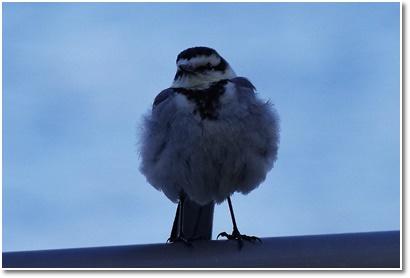
Hakusekirei

Three sparrows?
It's a "mofumofu" figure unique to the cold winter.
Winter birds in Ishikawajima Park. This year's situation is a bit nervous, but please enjoy a walk while looking for wild birds.
[The Rabbit of Tsukuda]
January 26, 2019 18:00
The other day, fortunately, I was able to visit Ginza Inari Shrine, which is usually closed to the public. I hope everyone will see the state of the shrine.
Ginza Inari Shrine has been worshiping as a Inari in Ginza since the Edo period, as it can be found in the Chuo-ku Monoshiri Encyclopedia, and thriving business. Currently, due to the progress of land development, it is enshrined on the roof of the Ginza Echigoya Building in Ginza 2-chome. You cannot visit the rooftop at stamp rally around Ginza Hatcho Shrine in AUTUMN GINZA, which is held from late October to early November.
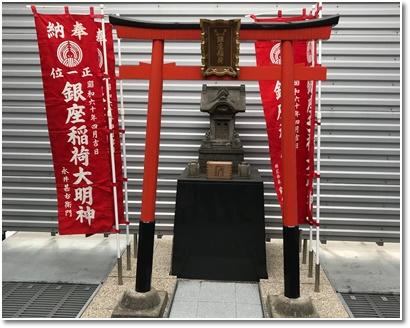 Only Inari was quietly seated on the rooftop. Only Inari was quietly seated on the rooftop.
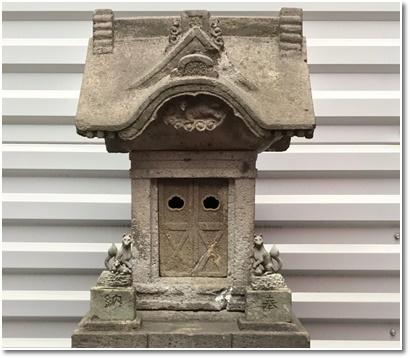 You can see the passage of time in the stone structure. You can see the passage of time in the stone structure.
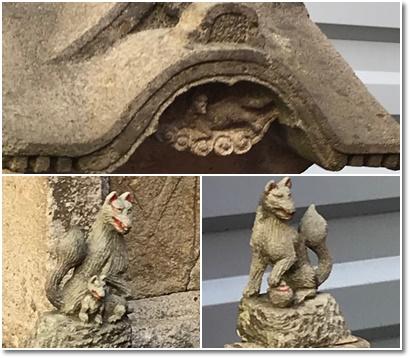 The fox on the left is a fox, and the fox on the right is a jewel. The fox on the left is a fox, and the fox on the right is a jewel.
The street where Inari-san was in the Edo period was called "Kanze Shindo", and there was a Noh Kanze-style mansion. Looking at the map of the late Edo period, it is specially written in inari and red. In everyday life, he would have joined hands on the street. It was a valuable experience to imagine the feelings of the people of Edo on a small lovely fox.
[The Rabbit of Tsukuda]
December 4, 2018 18:00
It's around this time when I'm busy in December, but every year "Oh! Yes, there is a place to stop. It is a general information center located at two locations, the front entrance on the first floor and the Kyobashi exit after entering Matsuya Ginza's Chuo-dori. A cute pin badge was also sold at the counter this year.

This year's pin badge design is from BENGT & LOTTA (BENGT & LOTTA), a Swedish designer unit, Nordic design, which is popular in the world.
Christmas season from now on! If you have such an adorable badge on the chest at the collar of the coat you go out, you will feel more excited and shine.
A wonderful project is involved in this pin badge. All proceeds will be donated to Room to Read, which continues to focus on literacy and women's education in Asia and Africa, based on the belief that children's education will change the world.
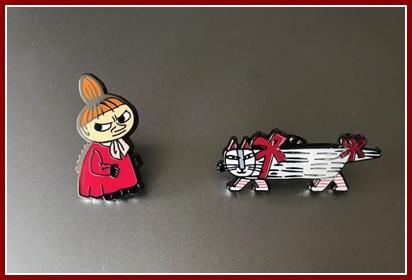 Left Pin Badge in 2016 Right Pin Badge in 2017 Left Pin Badge in 2016 Right Pin Badge in 2017
At the counter, there was another beeswax candle of Ginza. This is also a candle made from rare beeswax collected from the Ginza honeybee nest in cooperation with the Ginza Bee Project and Ryuji Ando, a leading honey candle expert, in order to donate in full to Room to Read.

The Ginza Bee Project has already penetrated everyone, but honeybees are growing on the roof of the paper pulp hall on Matsuya-dori for the purpose of coexisting with the city and nature, and since the start of the activity in 2006, greening is spreading around Ginza for honey extraction.
That's right! Tsukiji, which is next to Ginza, was opened to foreign countries at the beginning of the Meiji era and became "Tsukiji Reservoir". Many mission-based schools have opened there, making it the birthplace of today's girls' schools and Futaba Gakuen. The cooperation of the department store in Ginza, which is adjacent to Tsukiji, the place where women's education in Japan started, and the Ginza area, is a very wonderful charity activity that saves children who cannot read and write yet in the world. And as a pin badge fan rabbit, I'm glad that this year's collection will increase again.
The number of pin badges and candles is limited, so please go out early.
Click here for more information about Room to Read.
Click here for more information about the Ginza Bee Project.
[The Rabbit of Tsukuda]
Nov. 21, 2018 09:00
November 4 The whole Chuo-ku Museum 2018 was held, and there were many joint events with companies that could not normally visit the general public. One of them, I participated in the printing experience of a guide letterpress printing machine at the Mizuno Printing Museum in Irifune 2-chome.
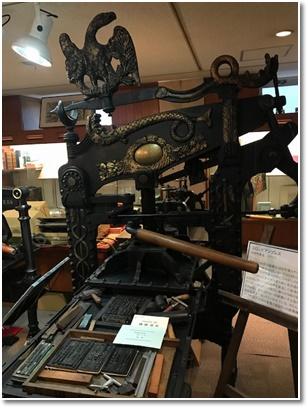 Colombian Press 1850 Manufactured U.K. Colombian Press 1850 Manufactured U.K.
I'm surprised at the black glowing thickness of the printing machine you see for the first time arranged on the floor and its size. The first iron printing machine in the world was U.K. around 1800.
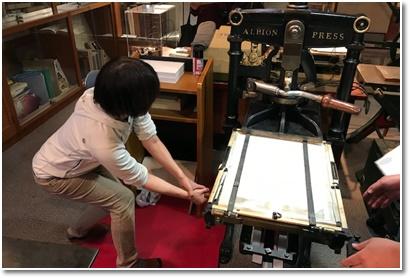 Albion Press Machine Manufacturing 1860 U.K. Albion Press Machine Manufacturing 1860 U.K.
What I experienced was an albion press machine manufactured at U.K. in 1860. It is said that it has become more compact and simple than the original machine, but you can see how the handle is heavy and how the printing industry was hard work.
With this printing machine, William Morris, who is still popular as a Morris pattern in the back and bedding section of department stores, printed "Chocer Works", one of the most beautiful books in the world.

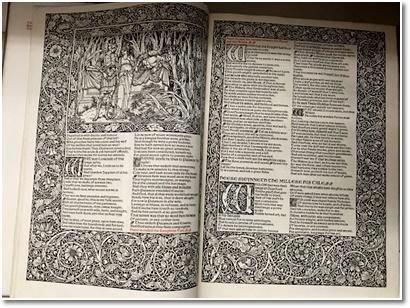
It's a breathtaking impression of the fine decorations drawn by Morris and the beauty of illustrations. After the book was completed, Morris has discarded all the prints and decorations used to avoid being imitated.
When these Colombian Press and Albion Press machines began to be imported during the Meiji era, Fuji Hirano of Tsukiji Press Works, a pioneer in type printing in Japan, began to manufacture domestic printing machines by imitating them.
In a book of a person related to Chuo-ku, there was Yukichi Fukuzawa's "Recommendation of Learning".
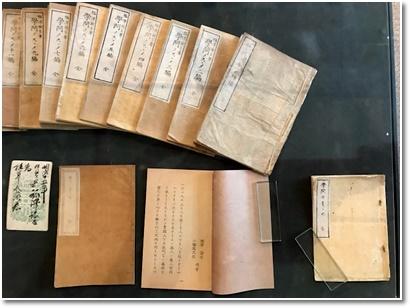
When the first edition was published in 1872, it became a great reputation, and a total of 17 editions were published in 1876. This book became a great bestseller of 3.5 million copies throughout the Meiji era, but the first part of this collection is one of the 10 copies currently confirmed.
In addition, there was a tour report of the Iwakura Mission, which was dispatched for about two years from November 1871 to 1873. (It was Saigo Takamori, who was currently living in Nihonbashi Ningyocho 1-chome, was entrusted with the absence government during this time.)
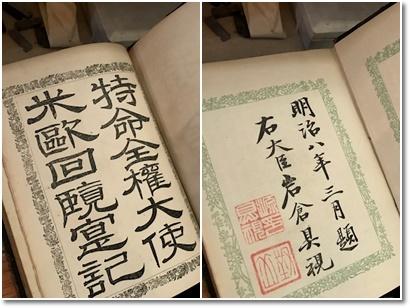 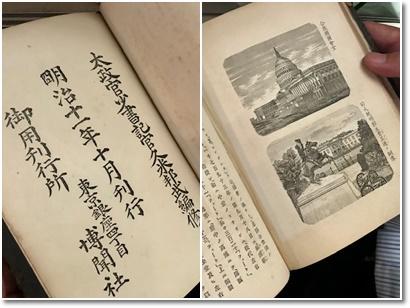 The "Special Missionary Ambassador to the United States and European Circulars" is printed in print cast by Fuji Hirano and Shozo Motoki of Nagasaki (deciding the later Meiji dynasty type). Furthermore, as evidence of the historical fact that printing-related companies gathered in Ginza Brick Street in the early Meiji era, this book is a publication of Ginza 4-chome Hakumonsha. The "Special Missionary Ambassador to the United States and European Circulars" is printed in print cast by Fuji Hirano and Shozo Motoki of Nagasaki (deciding the later Meiji dynasty type). Furthermore, as evidence of the historical fact that printing-related companies gathered in Ginza Brick Street in the early Meiji era, this book is a publication of Ginza 4-chome Hakumonsha.
Today's introduction was a very part of the Mizuno Printing Museum, which was collected with the idea of "existing the culture where printing exists", but it was the whole Chuo-ku museum where you could meet valuable collections.
You usually need to make a reservation for this tour. If you wish, please call 03-3551-7595 in advance. Since there is only one guide, thank you, thank you.
[The Rabbit of Tsukuda]
October 28, 2018 14:00
The gull, designated as a bird in Tokyo, flew again this year. According to the rabbit birdwatching for the last three years, they come here in Chuo-ku around October 20 every year.
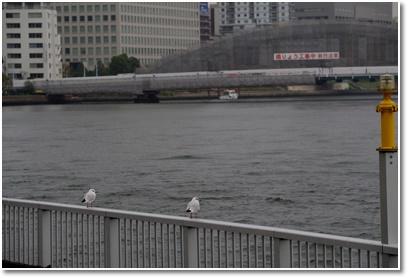
When I found it, I was resting about eight birds, but I flew during the photography time and only two birds remained.
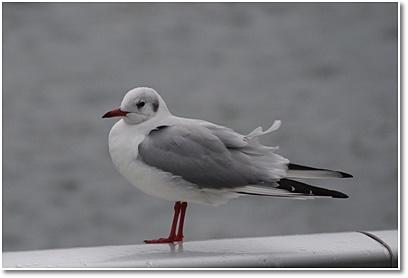 Tokyo bird "Yurikamome" (Shinagawa-ku bird) Tokyo bird "Yurikamome" (Shinagawa-ku bird)
Looking at how the Japanese turtle was designated as a bird in Tokyo, it was designated in 1965, and it was designated as the first place in the postcard voting by Tokyo residents from pheasants, starlings, Japanese white-eye, etc. . By the way, the second place is Japanese white-eye and the third place is Hibari.
So what are the birds in the ward designated?
In the 23 wards, only four wards were designated as birds in the ward: Japanese plums in Shinagawa-ku, Onaga in Setagaya-ku, swan in Chiyoda-ku, and Japanese tit in Meguro-ku.
 The bird "Onaga" in Setagaya-ku The bird "Onaga" in Setagaya-ku
The picture is a naga that I took in Tsukuda last month. The feathers are muffy because they are the young man of adult bird who has just nested. It is a member of the crow, but it is a beautiful bird with a black head and a long tail, and can be found in the trees of Akashicho and Tsukuda Park in Chuo-ku. The voice is characterized by giggy, so if you think it's a strange voice, look for it and look.
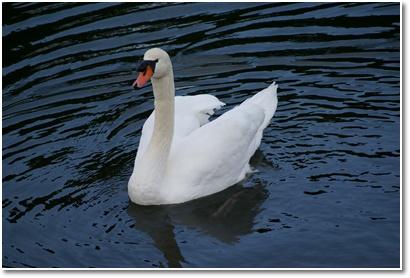 The bird "Swan" in Chiyoda-ku The bird "Swan" in Chiyoda-ku
The photo shows a mute swan in the moat of the Imperial Palace. These swans are not found in Chuo-ku.
 The bird "Japanese tit" in Meguro-ku The bird "Japanese tit" in Meguro-ku
Citrus screams with a clear voice. This photo was found in a squeal near the Chuo-ku ward office. I'm in such a place! I was so happy. It is a bird that appears relatively in the city.
It is a pity that birds in Chuo-ku are not designated, but birds in each ward can be easily seen in Chuo-ku. From now on, the day when the plums will fly more and more, and the fence of the Sumida River Terrace will be full is almost ready.
[The Rabbit of Tsukuda]
September 19, 2018 09:00
I visited Hyatt St Rick Ginza Tokyo, which just opened this year in Ginza 6-chome. This place used to be the Asahi Shimbun from 1888 to 1927, Soseki Natsume was the main writer since 1907, and Takuboku Ishikawa has served as a proofreader since 1909. As you all know, there is poetry monument of Takuboku.
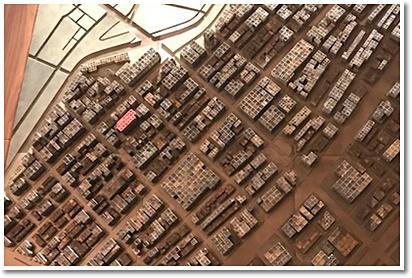 At the entrance on the first floor, you will be greeted by a map of Ginza made using the type that was actually used in printing until 50 years ago. The red one is here. You can feel the grid-like appearance of Ginza, which inherits the town layout of the Edo period, with a three-dimensional effect. At the entrance on the first floor, you will be greeted by a map of Ginza made using the type that was actually used in printing until 50 years ago. The red one is here. You can feel the grid-like appearance of Ginza, which inherits the town layout of the Edo period, with a three-dimensional effect.
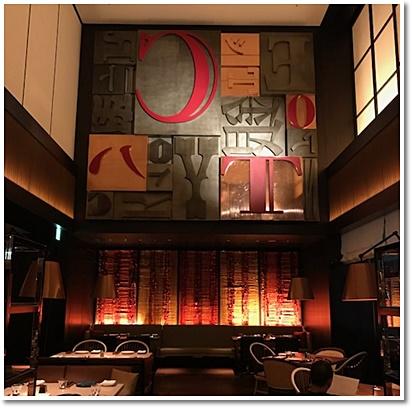
The stairwell walls on the 3rd and 4th floors have contemporary art in print.
In 1872, a brick street was built with the prestige of the government, but it was not easily accepted by general stores, and newspaper companies gathered with an eye on the convenience of transportation and good information collection. For a while, Ginza became a city where about 200 affiliated companies such as newspaper companies and printing offices gathered.
Printing in that era involves engraving letters on metal, arranging prints side by side, writing, and printing them. Imagine while looking at the wall that made the top print of the time art.
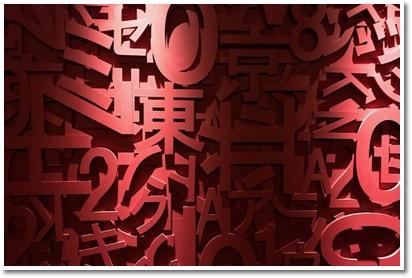
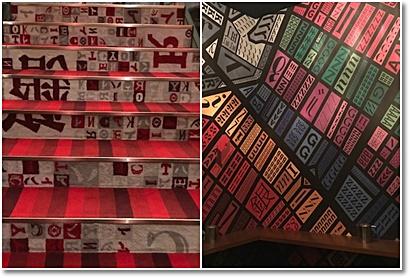
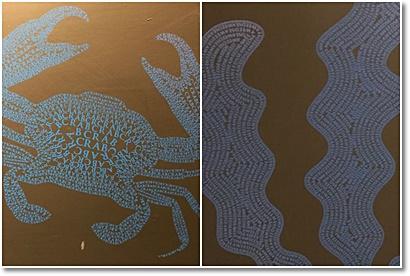
There are letters art works everywhere, and the fun of searching is tickled, and it seems that this hotel aims to be a base for visitors to know, feel, and experience the charm of Ginza.
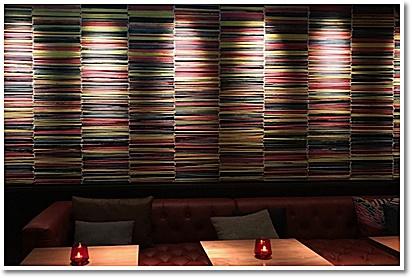
In the dining & bar on the 3rd floor, the paper that comes out of trial printing at the start of newspaper printing and the paper that is discarded are wallpapers.

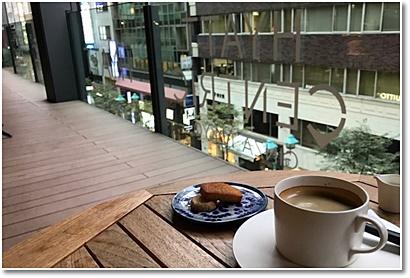
In addition, you can spend a moment that is blocked from cars and traffic while being blown by the unusual outside wind in Ginza. The space with the opposite building of Namiki-dori St. is exactly the town layout space between Yokocho 7 from the Edo period. From now to the past, from the past to the present, and from the future. It is a valuable place to hit in Ginza, which is also indulge in fantasy trips of time. By all means, why don't you use it for accommodation in the middle of the silver bra?
|
Links
|

 Eurasian wigeon with northern pintail (the head is yellow)
Eurasian wigeon with northern pintail (the head is yellow) northern pintail
northern pintail Eurasian wigeon
Eurasian wigeon  The grebes I met on January 24
The grebes I met on January 24 mallard
mallard 

 Only Inari was quietly seated on the rooftop.
Only Inari was quietly seated on the rooftop. You can see the passage of time in the stone structure.
You can see the passage of time in the stone structure. The fox on the left is a fox, and the fox on the right is a jewel.
The fox on the left is a fox, and the fox on the right is a jewel.
 Left Pin Badge in 2016 Right Pin Badge in 2017
Left Pin Badge in 2016 Right Pin Badge in 2017
 Colombian Press 1850 Manufactured U.K.
Colombian Press 1850 Manufactured U.K. Albion Press Machine Manufacturing 1860 U.K.
Albion Press Machine Manufacturing 1860 U.K.



 The "Special Missionary Ambassador to the United States and European Circulars" is printed in print cast by Fuji Hirano and Shozo Motoki of Nagasaki
The "Special Missionary Ambassador to the United States and European Circulars" is printed in print cast by Fuji Hirano and Shozo Motoki of Nagasaki 
 Tokyo bird "Yurikamome" (Shinagawa-ku bird)
Tokyo bird "Yurikamome" (Shinagawa-ku bird)  The bird "Onaga" in Setagaya-ku
The bird "Onaga" in Setagaya-ku The bird "Swan" in Chiyoda-ku
The bird "Swan" in Chiyoda-ku  The bird "Japanese tit" in Meguro-ku
The bird "Japanese tit" in Meguro-ku At the entrance on the first floor, you will be greeted by a map of Ginza made using the type that was actually used in printing until 50 years ago. The red one is here. You can feel the grid-like appearance of Ginza, which inherits the town layout of the Edo period, with a three-dimensional effect.
At the entrance on the first floor, you will be greeted by a map of Ginza made using the type that was actually used in printing until 50 years ago. The red one is here. You can feel the grid-like appearance of Ginza, which inherits the town layout of the Edo period, with a three-dimensional effect.







